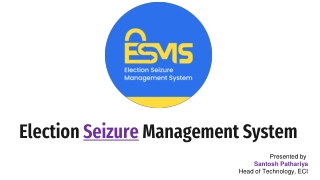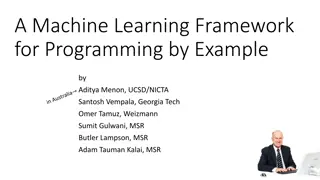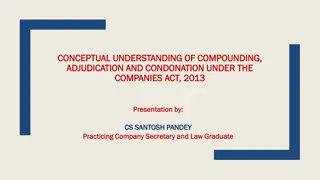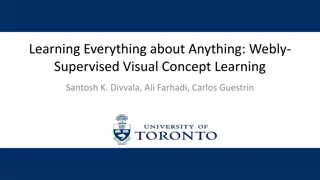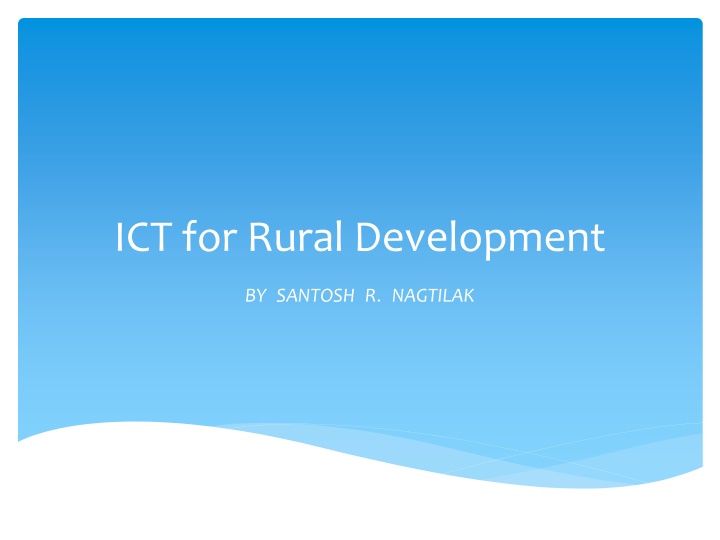
ICT for Rural Development: Empowering Communities through Technology
Explore the potential of Information and Communication Technologies (ICTs) in promoting rural development, addressing constraints, and showcasing case studies. Discover the impact of technology on rural livelihoods, the challenges faced in rural communication, and the role of ICTs in providing essential services to dispersed populations.
Download Presentation

Please find below an Image/Link to download the presentation.
The content on the website is provided AS IS for your information and personal use only. It may not be sold, licensed, or shared on other websites without obtaining consent from the author. If you encounter any issues during the download, it is possible that the publisher has removed the file from their server.
You are allowed to download the files provided on this website for personal or commercial use, subject to the condition that they are used lawfully. All files are the property of their respective owners.
The content on the website is provided AS IS for your information and personal use only. It may not be sold, licensed, or shared on other websites without obtaining consent from the author.
E N D
Presentation Transcript
ICT for Rural Development BY SANTOSH R. NAGTILAK
Outline Setting the scene Identifying the rural The potential of ICTs for rural development Constraints Potential solutions Case studies
Setting the scene Understanding Livelihoods: complexity, choices and policies in Southern India A 20 minute video by Catcher Media for DFID Designed to spark discussion about sustainable livelihoods approaches Resource for development professionals in the NGO and Government sectors working at both policy and field levels
Setting the scene What are the core messages this video is trying to get across? What strengths does the video format have in delivering these? How would you use the video in a learning context with NGOs? Government officials?
Identifying the rural What do we think of when we consider the rural ? Low density Extensive production Forestry Agriculture Generally poor Why else would people migrate to towns? Backward Limited services The Urban as dominant and civilised
Identifying the rural How much rural development have you learnt in your courses so far? An example of bias against the rural ! Yet almost all the world s food and raw materials come from rural areas Michael Lipton (1977) Why Poor People Stay Poor Urban bias Dominance of interests designed to increase unequal terms of trade between urban and rural areas and people
ICTs in rural development Potential to Provide services to dispersed rural people Radio, TV, Internet, Mobile telephony Disseminate information more broadly Market information Agricultural extension services Breakdown the urban bias But Infrastructure is needed Costs must be affordable
Key constraints in rural communication Dispersed low density populations Therefore high cost of providing services Distances High transport costs to peripheral regions Terrain Mountain ranges Impassable roads in rainy seasons Traditional lack of technological knowledge Need for easy to use solutions
Technological solutions Radio can reach everywhere Soaps for health and rural development Satellites can likewise overcome line of sight constraints Especially VSAT (Very Small Aperture Terminal) Gilat in Rwanda, Kenya, DRC, Mozambique Posta Kenya http://www.gilat.com/Solutions_CaseStudies_Posta.asp The WorldSpace solution http://www.worldspace.com/about/index.html Established in 1990 - satellite radio Downloading learning content to rural areas Telephony Mobiles: dramatic impact on communication
Case studies Agricultural Information Systems M.S. Swanimathan Research Foundation (India) Gilat VSAT solutions in Africa African Agricultural Technology Foundation Philippines: e-Learning for agricultural communities Bangladesh NGOs Network for Radio and Communication HP KNUST Digital Villages
M.S. Swaminathan Foundation in southern India Village knowledge centres for fishing communities Dangers of fishing in ignorance of the weather Use of satellite imagery Disseminate information to whole community Women also know, and can give them other tasks!
M.S. Swaminathan Foundation in southern India Village Knowledge Centres Particular emphasis on women s education Use of solar power for energy Women helping rural women Initially from 19997 funded by IDRC Now plans to roll out across India
Bangladesh NGOs Network for Radio and Communication Amateur radio Working with Oxfam since 2000 To promote use of amateur radio Community Radio Training people in the use of community radio since 2001 Supporting NGOs Advocacy QuickTime and a TIFF (Uncompressed) decompressor are needed to see this picture.
Conclusions Need for a diversity of solutions Technologies can indeed overcome many of the physical constraints affecting rural areas But, need for will of governments to support them Is Lipton s urban bias still alive and well in developing countries?



